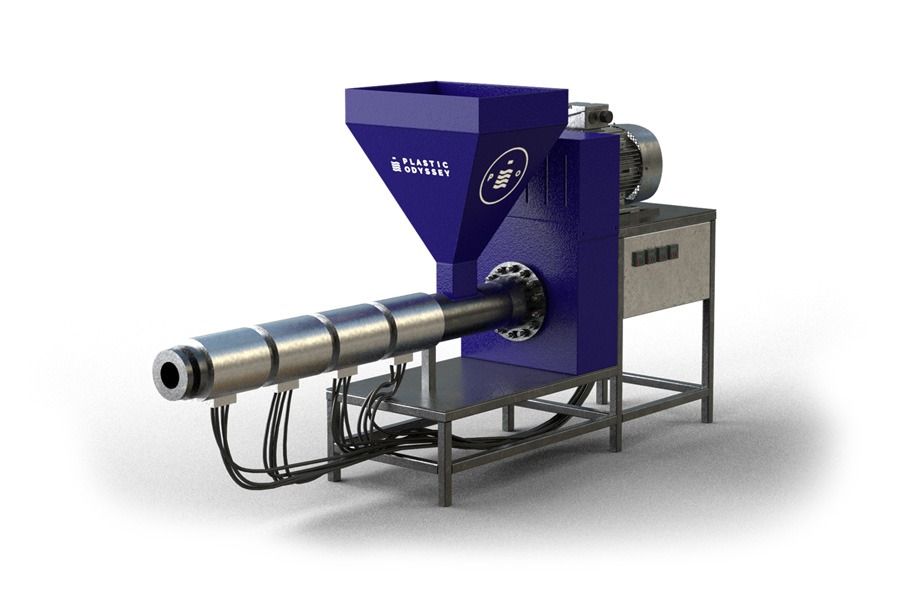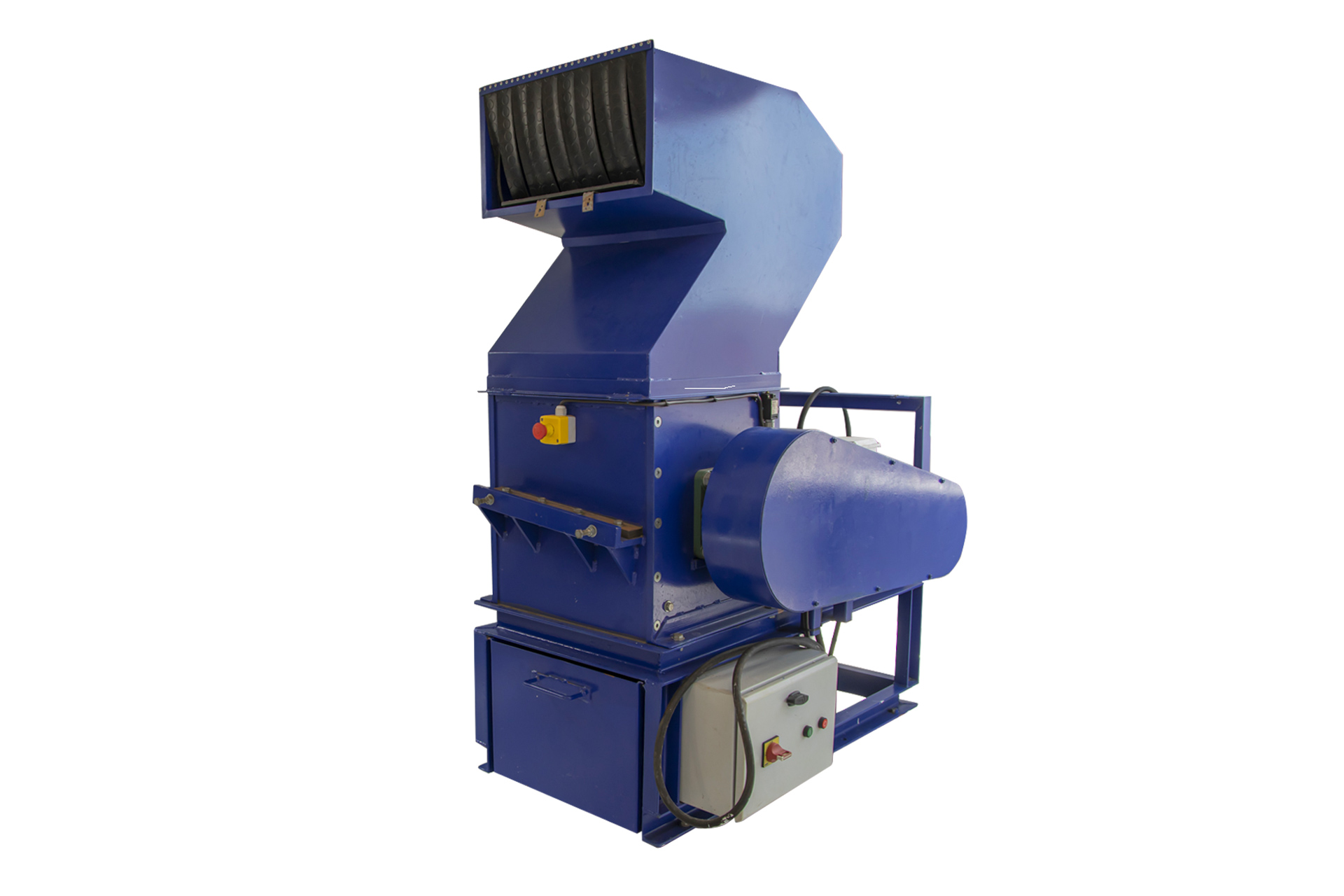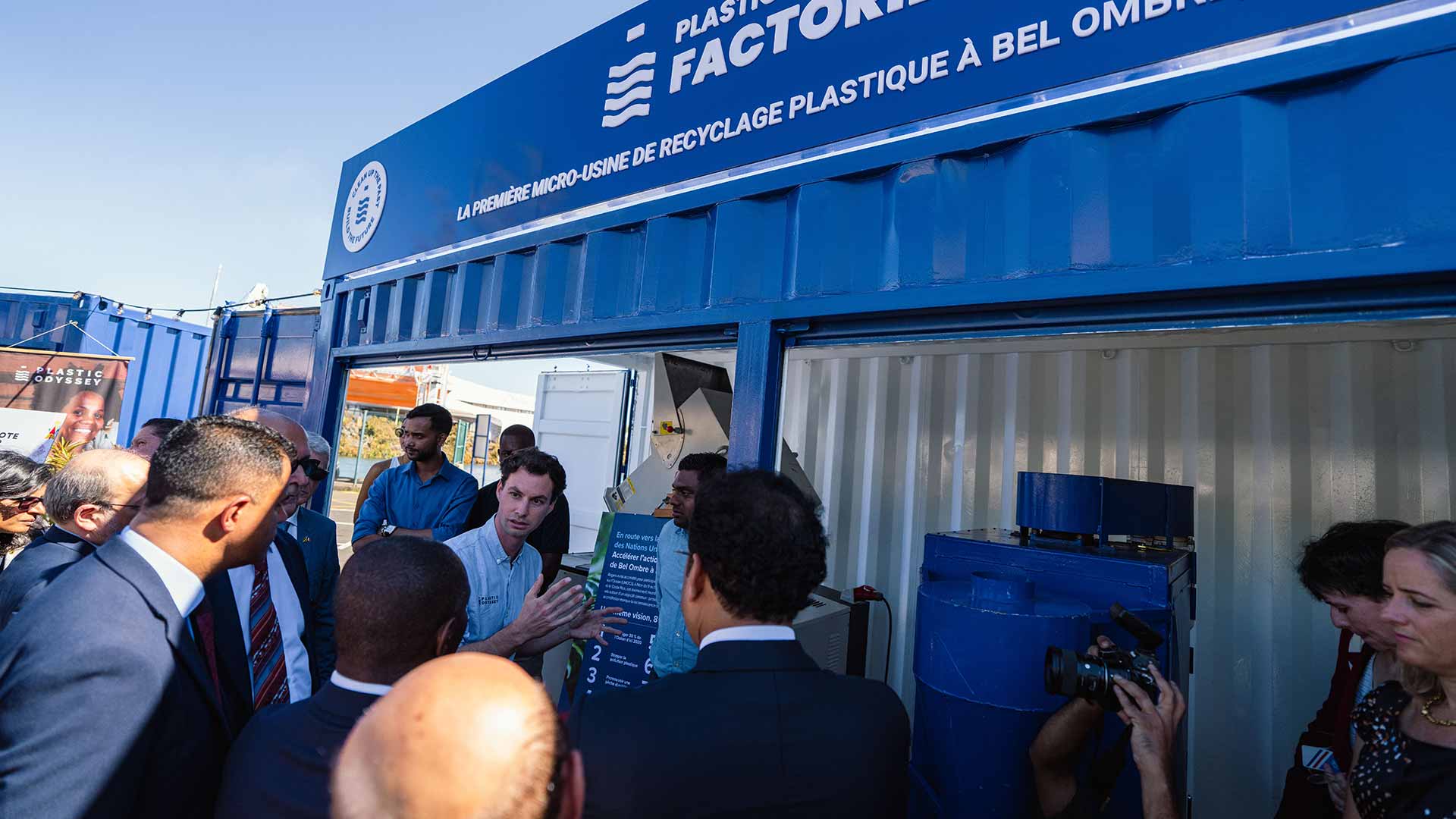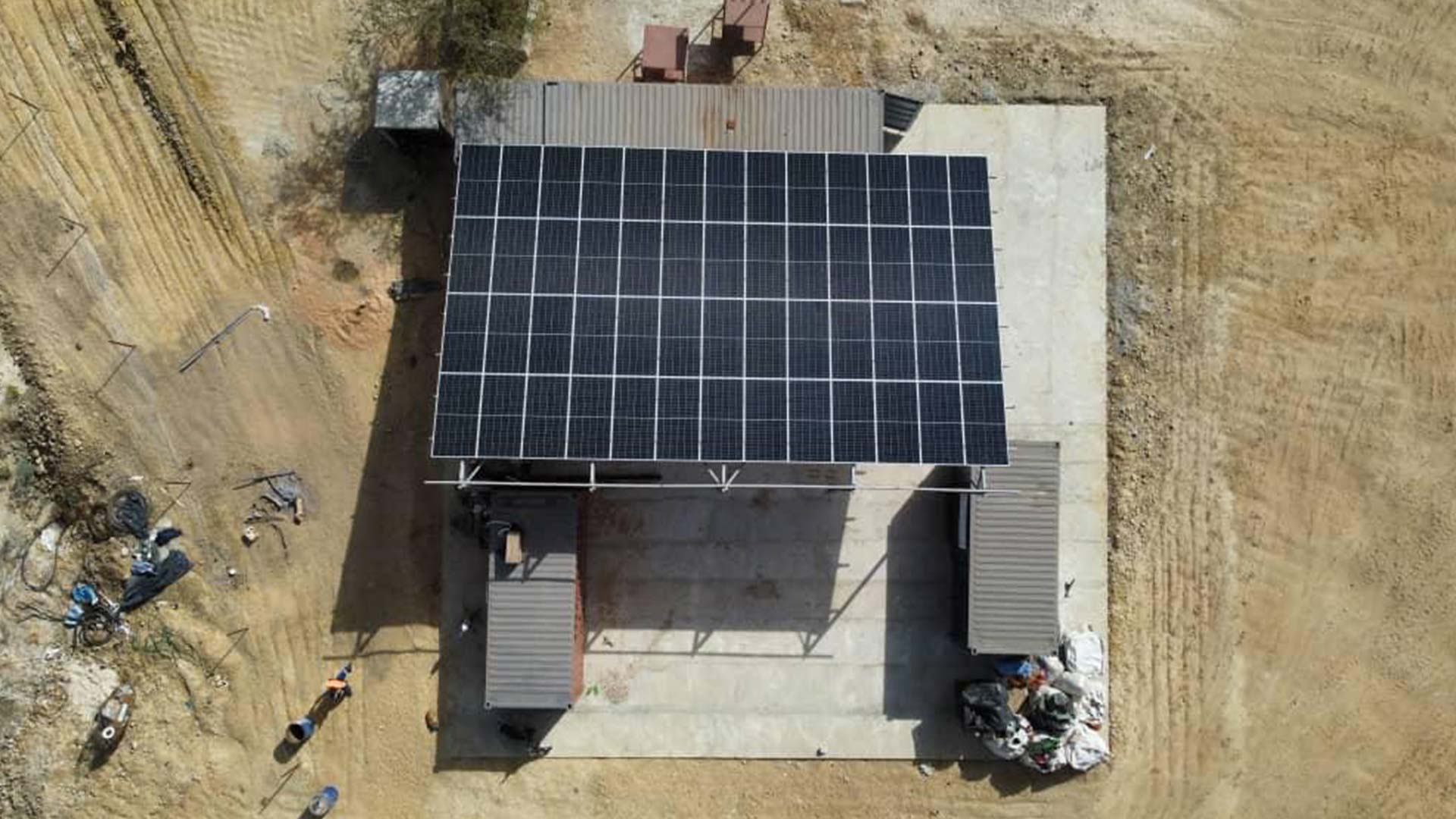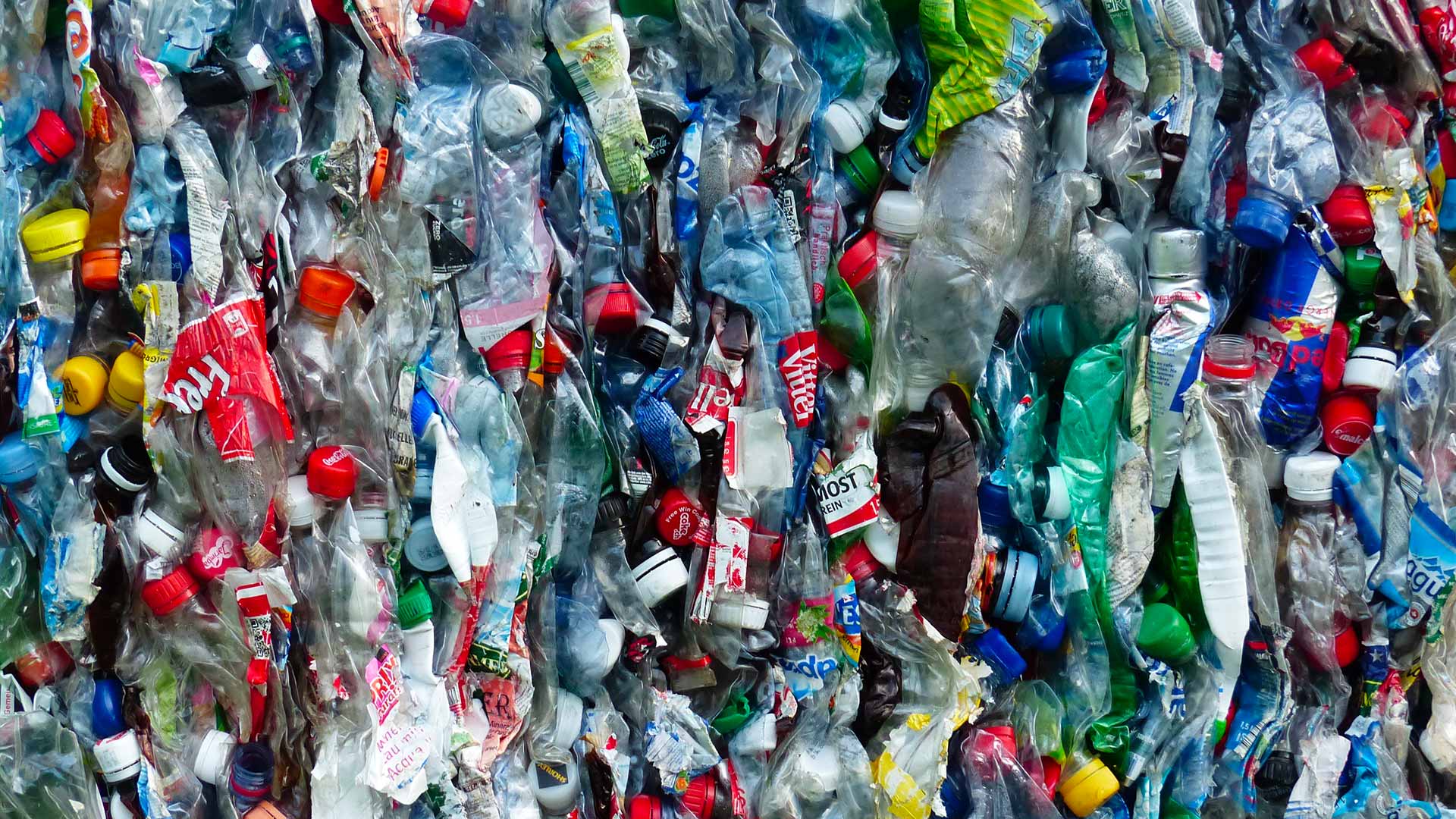
Presentation
When it is not possible on site, sorted plastic can be sold and transported for recycling elsewhere. To optimize transport and increase the amount of plastic loaded, it is necessary to form plastic bales using a compacting machine.
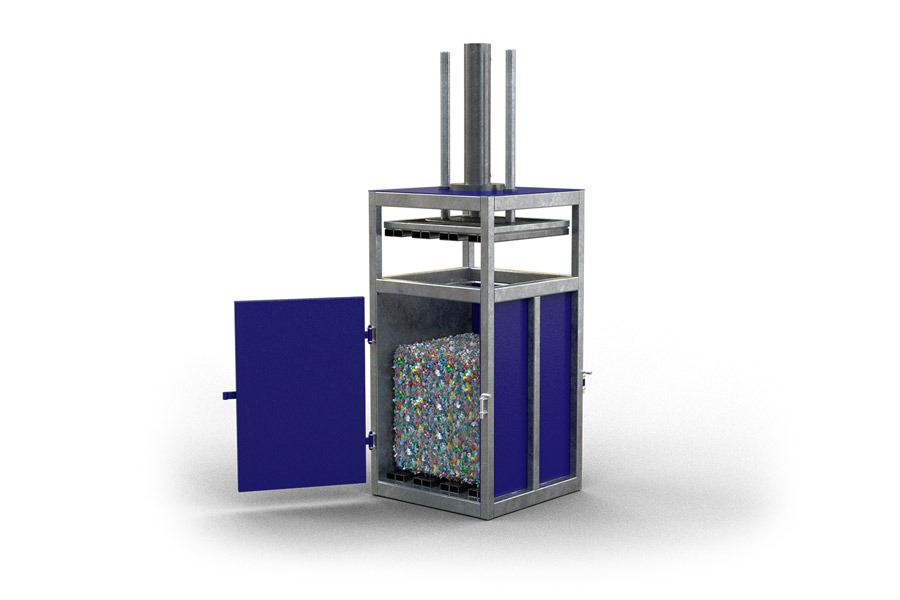
Items Description
Metal profiles welded together establishing the compactor’s frame. A hydraulic cylinder is attached to the upper part of the frame. It enables to lower a tray, exerting the compression force necessary to produce a plastic bale.
Process Description
Plastic waste is deposited in the compactor. By actuating the cylinder, the tabletop becomes lower which strongly compacts the plastic, compressed against the walls of the frame. They then take on a square shape, which creates the plastic ball. All that’s left to do then is to tie the bale up and extract it out from the compactor.
Entrance
Transparent PET bottles
Exit
Bales of 50cm PET bottles
Case Study
It is sometimes more interesting to send waste to specialized plants to optimize their recycling and preserve their properties as much as possible. Widely present on industrial sites, the compactor effectively reduces the volume of waste and optimizes its transport to these plants.
Planted in strategic locations, the compactor allows a large amount of waste, such as plastic bags, to be collected in bales. With this concentrated form, waste is less dispersed and is thus easier to recycle.
Technical Information
Dimensions: 70 x 70 x 200 cm (length x width x height)
Weight: 300 kg
Electric power: 2 kw
Compression force: 5 tons
Approximate cost: 3000€
Latest News
Local Factories: A New Plastic Waste Recycling Unit Installed in Mauritius
Plastic Odyssey, in partnership with Rogers Group, has inaugurated the first plastic recycling unit in Mauritius: a micro-factory capable of processin...
Hackathon with École Polytechnique de Thiès: Innovating for the Dakar 2026 Youth Olympic Games
As part of the “SUNU Plastic Odyssey” project supported by the French Embassy in Senegal, Plastic Odyssey and the Ecole Polytechnique de Thiès ha...
Local Factories: A New Plastic Waste Recycling Unit in Saint-Louis, Senegal
As part of the "SUNU Plastic Odyssey" project supported by the FEF (French Embassy Fund), Plastic Odyssey and BANCO have joined forces to deploy a rec...

